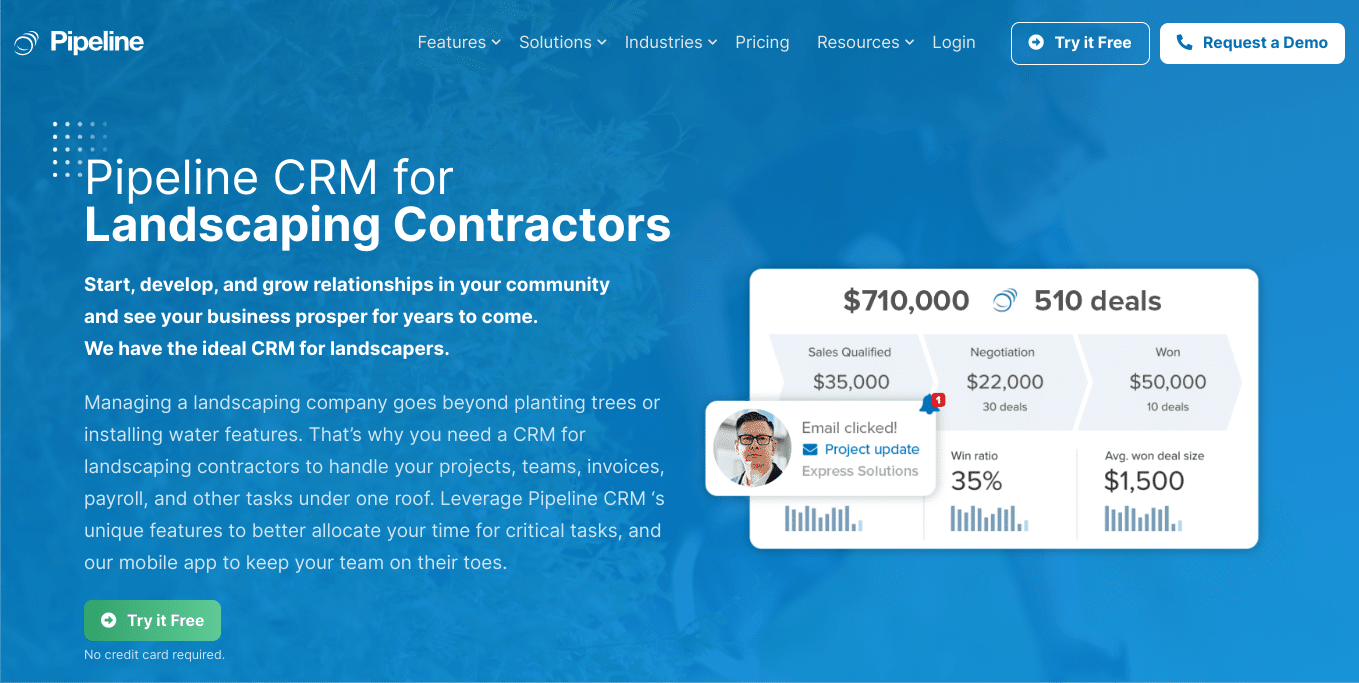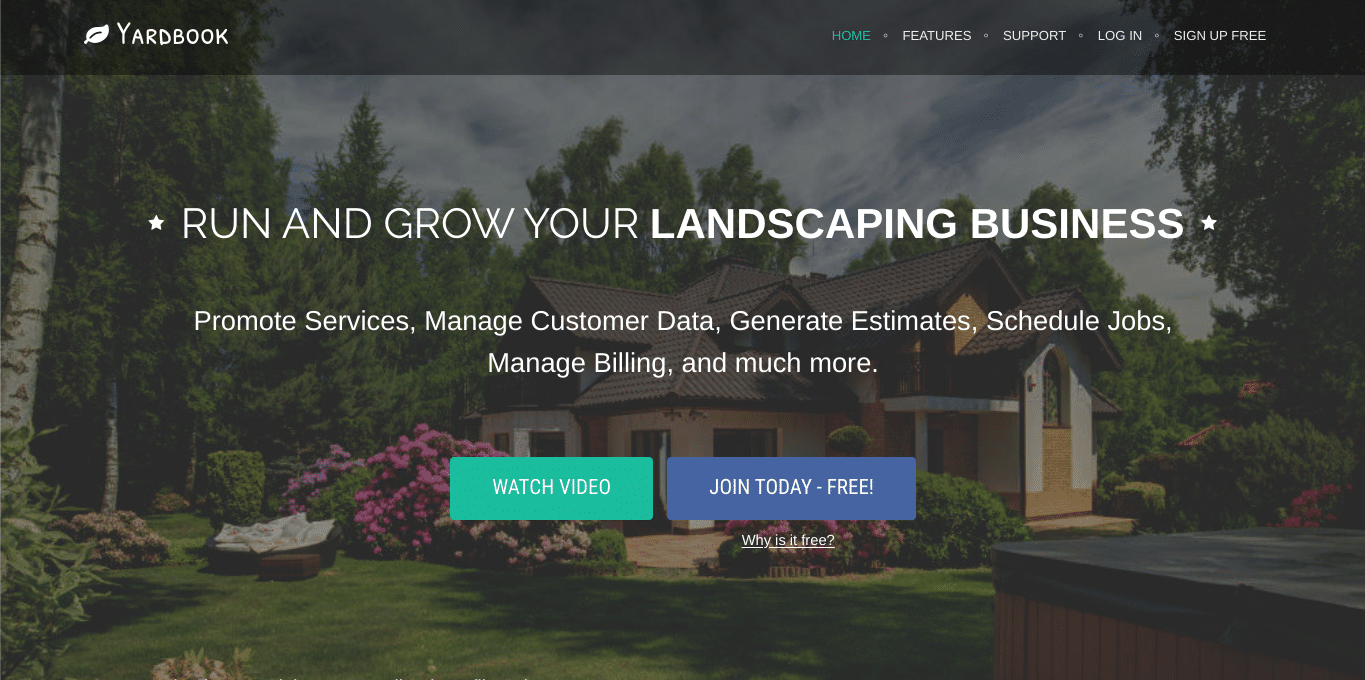Best CRM for landscape company is crucial for efficient customer relationship management. With the right software, landscape businesses can streamline communication, project management, and enhance overall productivity.
Key features and integration capabilities play a significant role in choosing the ideal CRM system, ensuring seamless operations tailored to the unique needs of a landscape company.
The Importance of CRM for Landscape Companies

Customer Relationship Management (CRM) software plays a crucial role in helping landscape companies manage their customer relationships effectively. By utilizing CRM systems, landscape businesses can streamline their communication, project management, and overall operations. These software solutions provide a centralized platform to store customer information, track interactions, and improve customer service.
Specific Features within CRM Systems for Landscape Businesses
- Lead Management: CRM software can help landscape companies track and manage leads efficiently, ensuring timely follow-ups and increased conversion rates.
- Project Tracking: With project tracking features, landscape businesses can monitor the progress of ongoing projects, allocate resources effectively, and meet deadlines.
- Invoicing: CRM systems with built-in invoicing capabilities enable landscape companies to generate invoices, track payments, and manage financial transactions seamlessly.
How a CRM Can Help Streamline Communication and Project Management
CRM systems facilitate seamless communication within a landscape company by providing tools for email integration, task assignment, and calendar synchronization. By centralizing communication channels, employees can collaborate more efficiently, resulting in improved project management and customer satisfaction.
Key Features to Look for in a CRM for a Landscape Company
When selecting a CRM software for a landscape company, it is essential to consider key features that cater to the specific needs of the industry. Features such as lead management, project tracking, and invoicing are crucial for enhancing operational efficiency and maximizing productivity.
Comparison of Different CRM Software Options
- Lead Management: Look for CRM systems that offer robust lead management capabilities to track leads from acquisition to conversion.
- Project Tracking: Choose a CRM software with advanced project tracking tools to monitor project progress, allocate resources, and optimize workflows.
- Invoicing: Opt for CRM systems that simplify the invoicing process, automate billing tasks, and provide detailed financial reports for better decision-making.
Customization Options in a CRM for Landscape Businesses
Customization features in CRM software allow landscape companies to tailor the system to their unique requirements. From custom fields to personalized workflows, customization options enable businesses to adapt CRM systems to meet their specific needs and preferences.
Integration Capabilities with Other Tools and Software

CRM systems that offer seamless integration with accounting software, scheduling tools, and project management platforms are highly beneficial for landscape companies. By integrating various tools, businesses can streamline operations, improve data accuracy, and enhance overall efficiency.
Popular Integrations to Enhance CRM Functionality
- Accounting Software: Integrating CRM with accounting software enables landscape companies to synchronize financial data, track expenses, and generate financial reports seamlessly.
- Scheduling Tools: Integration with scheduling tools allows landscape businesses to manage appointments, allocate resources, and optimize workforce scheduling efficiently.
Improved Efficiency and Productivity with Seamless Integration
By integrating CRM systems with other tools and software, landscape companies can eliminate manual data entry, reduce errors, and streamline processes. This integration enhances efficiency, productivity, and collaboration among team members, leading to better business outcomes.
User-Friendly Interface and Ease of Implementation
A user-friendly CRM interface is essential for landscape companies with varying levels of technical expertise. Choosing a CRM system that is easy to implement and requires minimal training for employees ensures smooth adoption and optimal utilization of the software.
Tips for Choosing an Easy-to-Use CRM System

- Consider the user interface: Look for a CRM with an intuitive design, clear navigation, and customizable dashboards for a user-friendly experience.
- Training and support: Select a CRM provider that offers comprehensive training resources, ongoing support, and responsive customer service to assist employees in using the software effectively.
Impact of Intuitive Design on Successful CRM Adoption, Best crm for landscape company
An intuitive design and accessible interface are key factors in the successful adoption of CRM software within a landscape company. By prioritizing user experience and ease of use, businesses can maximize the benefits of CRM systems and drive operational excellence.
Last Point
In conclusion, selecting the best CRM for a landscape company is a strategic decision that can transform how businesses interact with customers and manage projects effectively. By prioritizing user-friendly interfaces and integration capabilities, landscape companies can optimize their operations and drive growth in the competitive industry.
Q&A: Best Crm For Landscape Company
What are some specific features of CRM systems beneficial for landscape businesses?
CRM systems offer lead management, project tracking, and invoicing features that are essential for landscape companies to streamline their operations.
How can CRM integration with other tools benefit a landscape company?
Integration with accounting software, scheduling tools, and project management platforms can enhance functionality, improve efficiency, and boost productivity within a landscape business.
Why is a user-friendly interface important when selecting a CRM for a landscape company?
A user-friendly interface ensures easy adoption by employees with varying technical expertise, leading to successful implementation and minimal training requirements.
